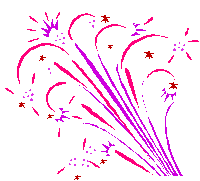
The use of adhesives such as paste, glue and tape, how they feel and
what they do is important for beginners. Limit choices at first. Let children
explore with paste and paper. It is a good idea to avoid the use of paste
brushes until later. Gradually add scissors, punches, ruler, staplers and other
textured materials. To encourge use of all materials, put such things as seeds,
scraps of paper, other collage materials in separated containers and place
them on a lazy susan. (Tray can be made and inserted on top of a turntable)
Tissue Collage: Let children use wide brushes to "paint" liquid starch on cans,
carpet yarn spools, construction paper, etc. and apply pieces of colored tissue paper.
3-D Collage: Collect items such as pieces of styrofoam, small pieces of wood, soft
wood (balsa), string, wire, pipe cleaners, colored macaroni, clothespins, corks, pine cones,
nut shells, straws, etc. Give the children some white glue and cellophane tape and let them
use their imaginations to make a "creation".
Feeling Pictures: Collect items such as feathers, sequins, dry cerals, textured
materials, scrap tiles, pine cones, seed pods, pebbles, shells, buttons, to let children make
"feeling" pictures with smooth, rough, glittery, shiny, soft textures.
Ironed Pictures: Let children make designs on sheets of wax paper with colored
tissue, leaves, other flat pieces of material and scraped bits of old crayons. Cover with
similar size wax paper and iron together. Hang so light can shine through.
Styrofoam Art: Save styrofoam meat trays and use them for collage wiwth glue,
spackle, or plaster of paris. Use various shapes of macaroni dyed with food coloring to
make an impressive display; or collect bits of natural materials such as leaves, rocks, shells
and use as in spackle prints